There are many things to do in Nara besides visiting its many temples and shrine. Try eating kakinoha-zushi in Naramachi, feeding deer at Nara Park, or visiting Nara National Museum.

Nara is known for its temples and shrine, there is the renowned giant bronze Buddha in Todaiji and the vermilion columns of Kasuga Taisha. However, don’t miss other things to do in Nara and only visit the temples. Come join us as we show you how to get to Nara, places we’ve stayed, delicious food we ate, and browse through the old street of Naramachi.
Getting to Nara
For the majority of foreign visitors, you will arrive Nara via Kyoto if you take the Shinkansen bullet train. There are a few trains you can take to Nara from Kyoto but the most cost-effective and fastest way is on the JR Miyakoji line (710 yen). You can also take the Kintetsu-Limited Express to Nara but it’s slightly more expensive and you arrive at the Kintetsu-Nara Station instead of Nara Station (13 min walk away).
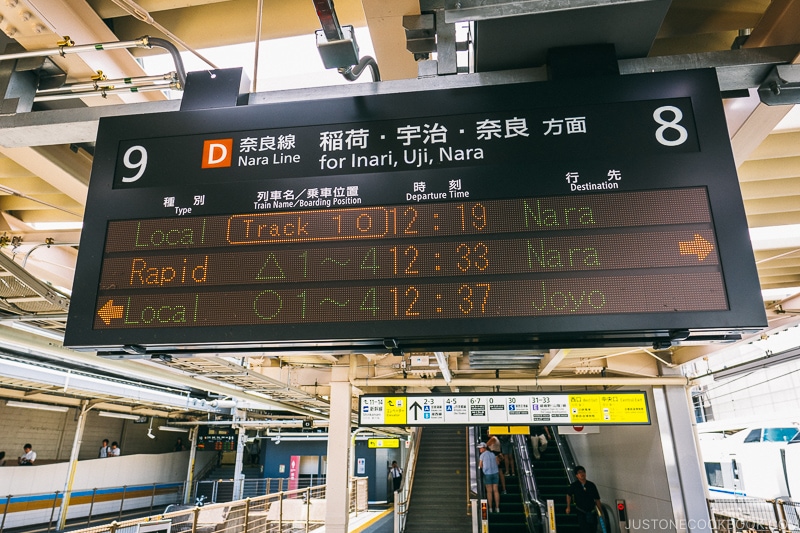
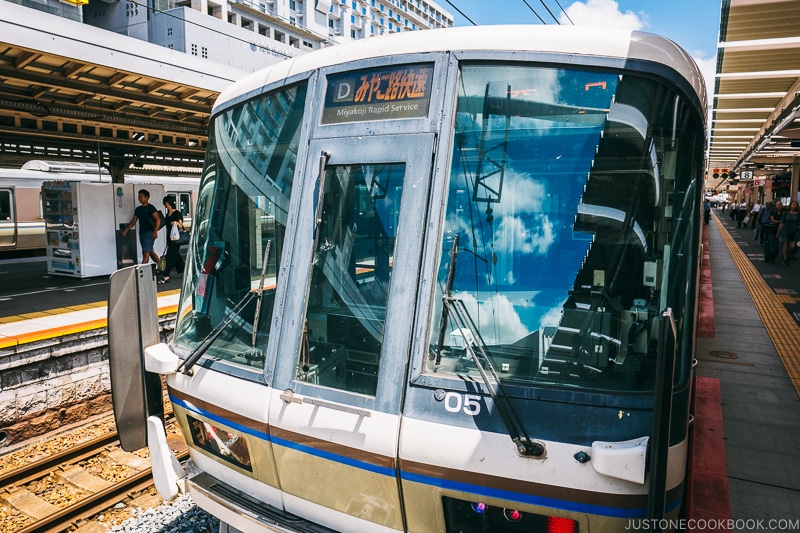
The Miyakoji Rapid Service train is spacious with large toilet facility and the seating is on a first-come, first-served basis.
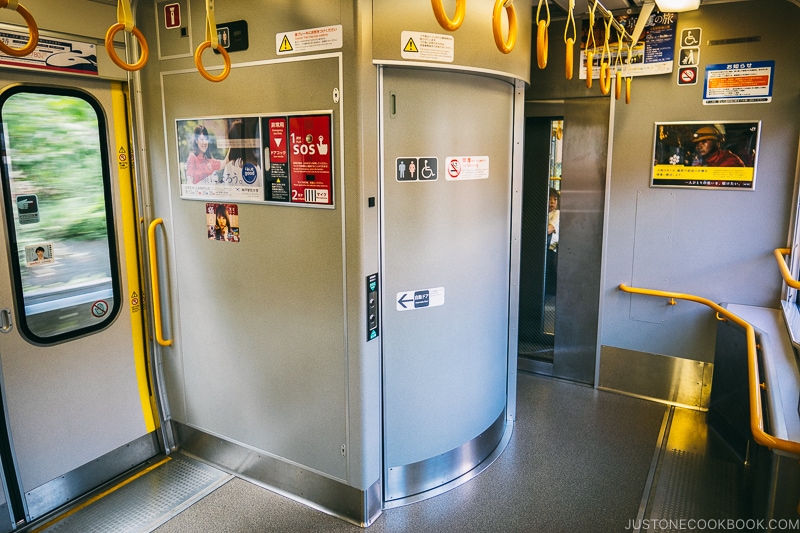

Although it’s a rapid service train, it will make seven stops along the way including at Uji. Uji is famous for its matcha.
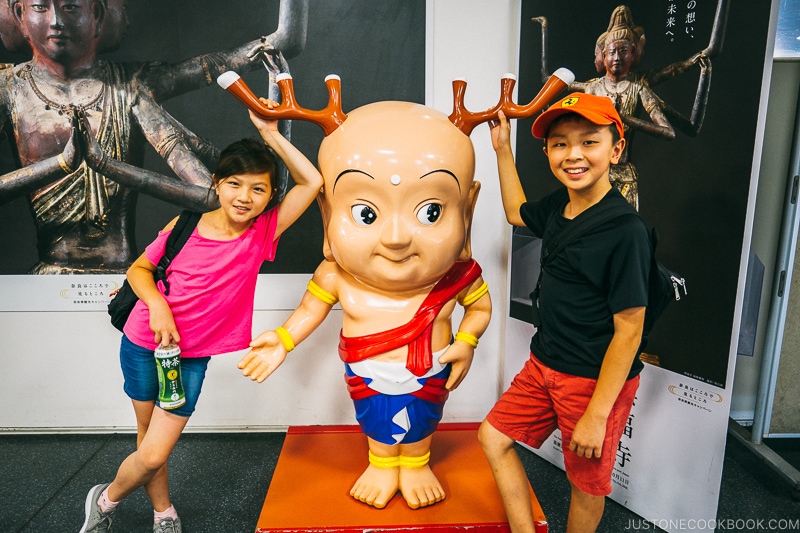
Nara Station
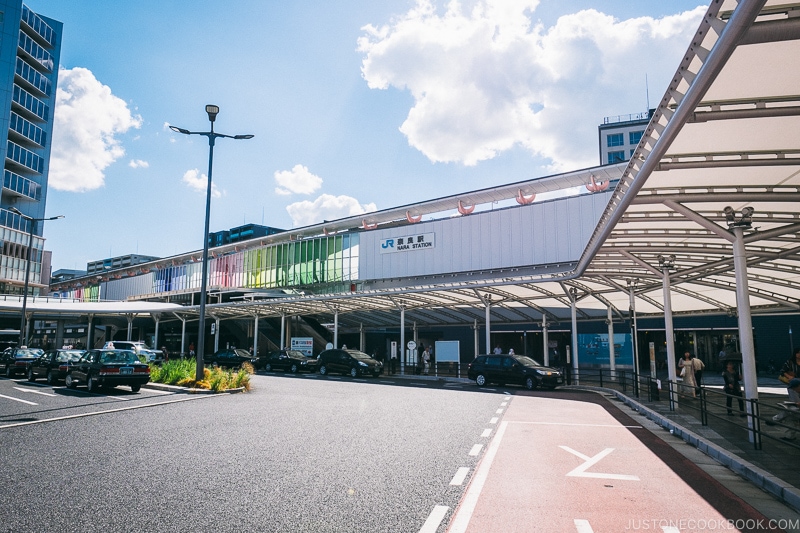
You can download the Nara City Main Route Map for bus routes but it’s fairly easy to get around the city and the main attractions.
- Bus 1 and 2 are loop bus that will take you to Todaiji, Nara Park, Kasuga Taisha, Kofukuji, Nara National Museum, Naramachi, and Gangoji Temple.
- Bus 70, 72, and 97 will take you to the west side of the city including Toshodaiji Temple and Yakushiji Temple. Only bus 97 will reach Horyuji Temple and takes about 1 hour.
- Bus 12 and 14 will take you to Heijo Palace Site.
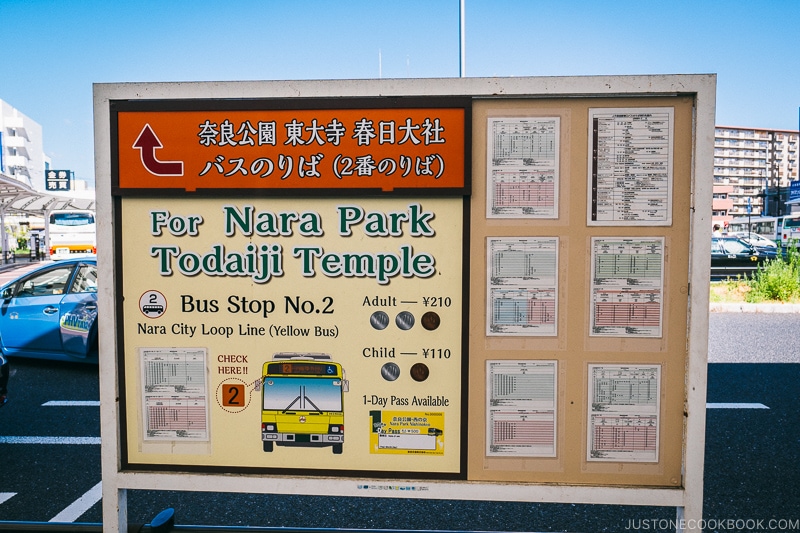
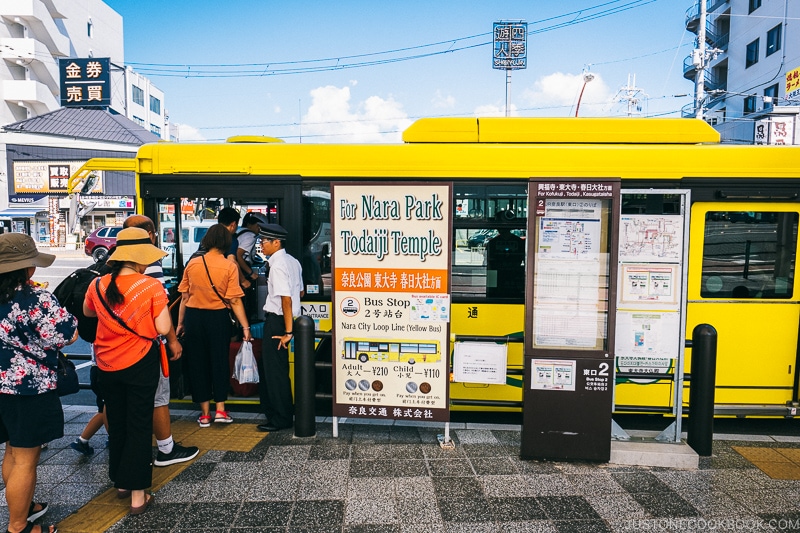
You can also take the taxi to get around the city and the standard pricing to each location are listed for visitors on the taxi stand sign.
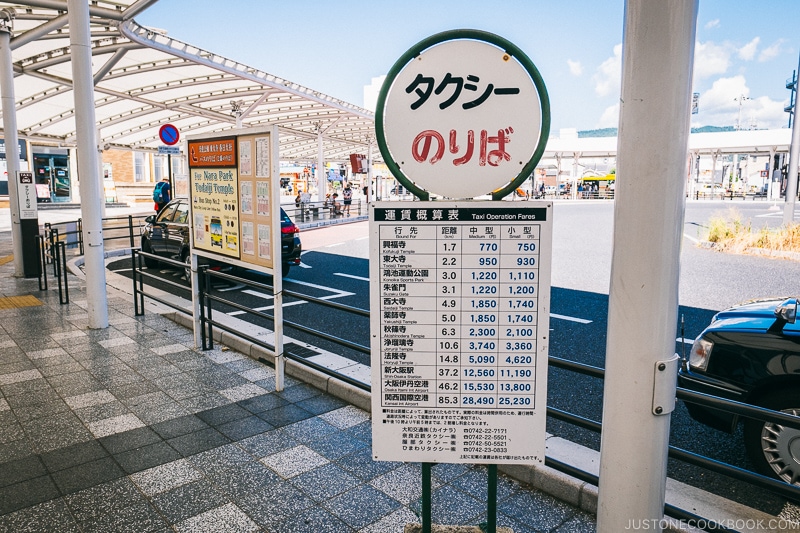
Alternatively, you can use Gurutto Bus to get around Nara. Each ride is 100 yen or you can purchase a day pass for 500 yen. There are Gurutto Bus stops near many of the popular locations.
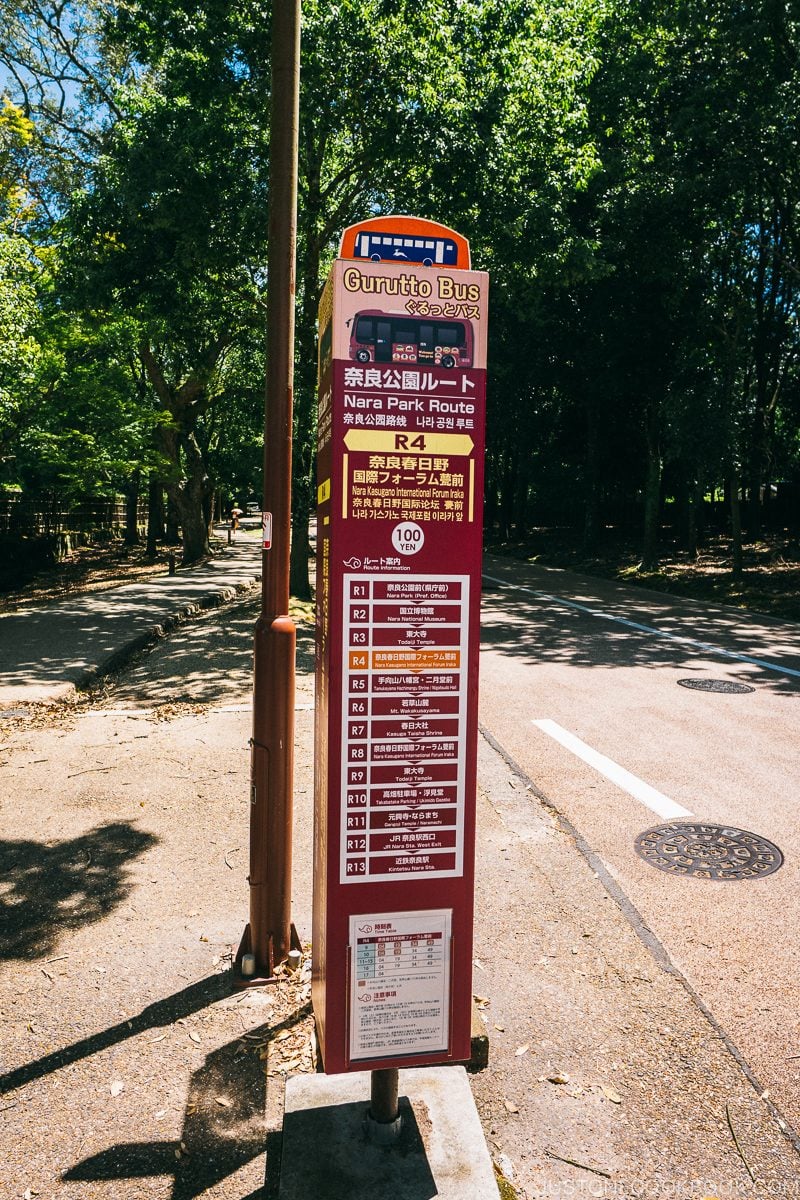
If you forget something or get hungry, JR Nara Station has you covered with plenty of restaurant choices and stores to purchase goods.
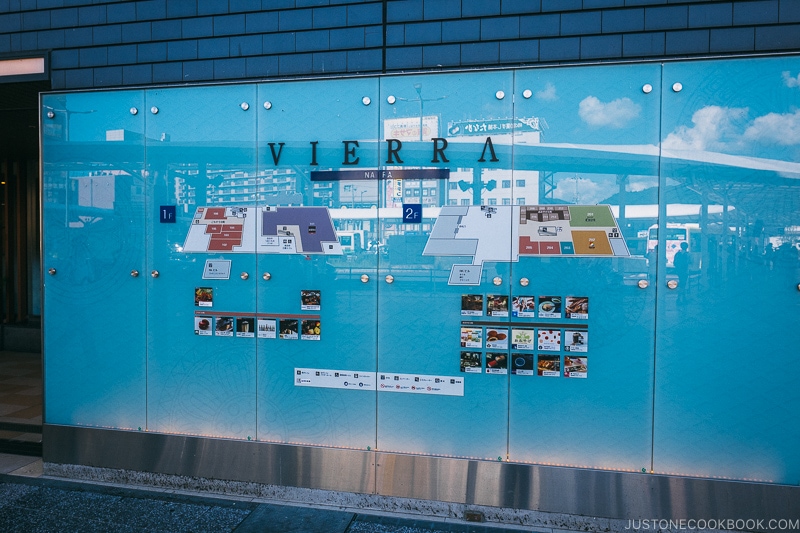
Naramachi – Nara’s Merchant District 奈良町
Naramachi was Nara’s historic merchant district and it is one of the main attractions for visitors to the city. There are well-preserved wooden machiya in this area that has kept their traditional look.
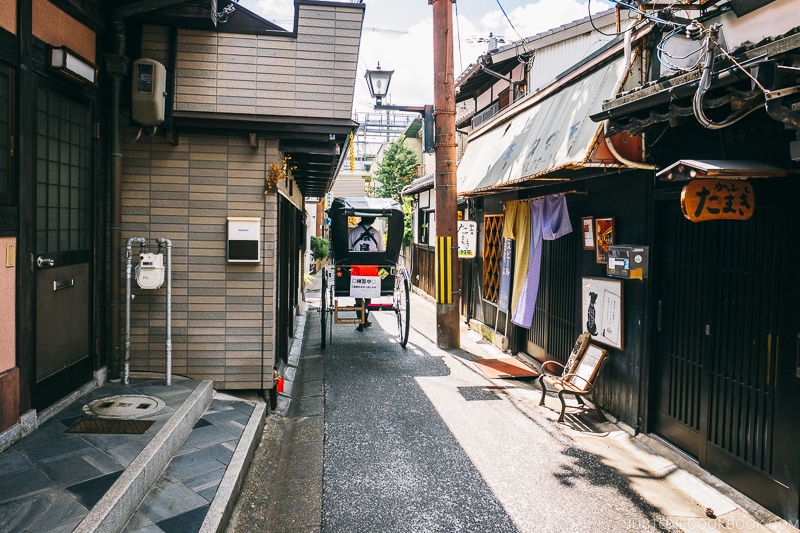
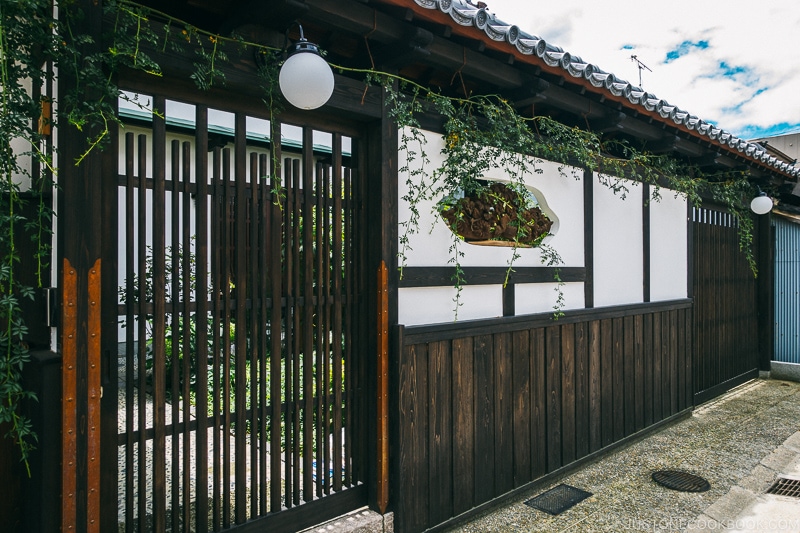
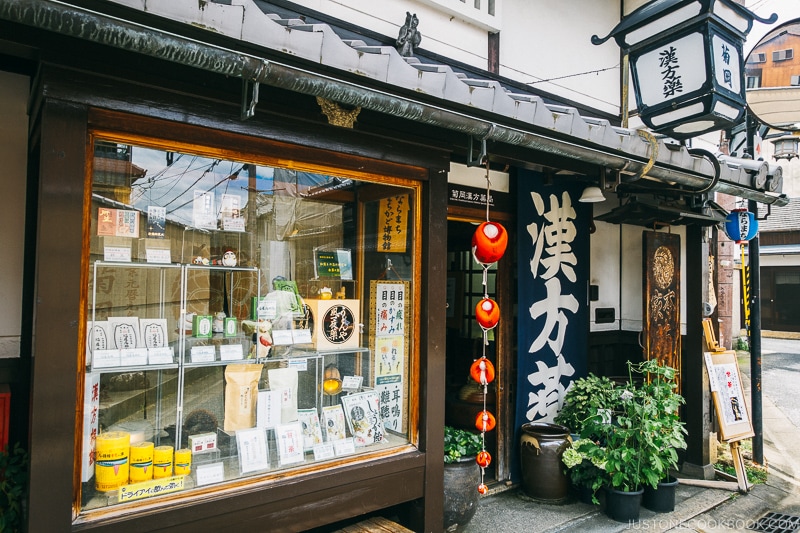
In Naramachi district, we recommend the Naramachi Museum (奈良町資料館) and Koshinoie (ならまち格子の家) where visitors can go for free. Koshinoie is a very well preserved machiya. You are able to explore the house from the inside and understand what it was like to live in a traditional townhouse.
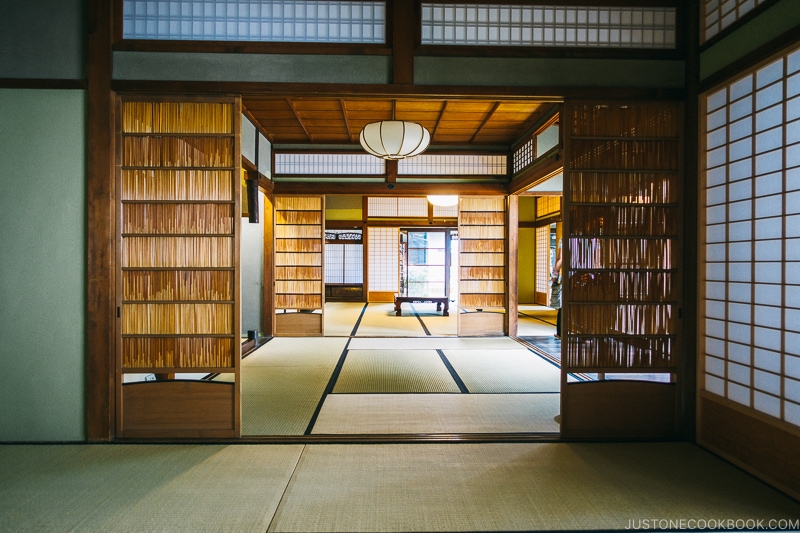
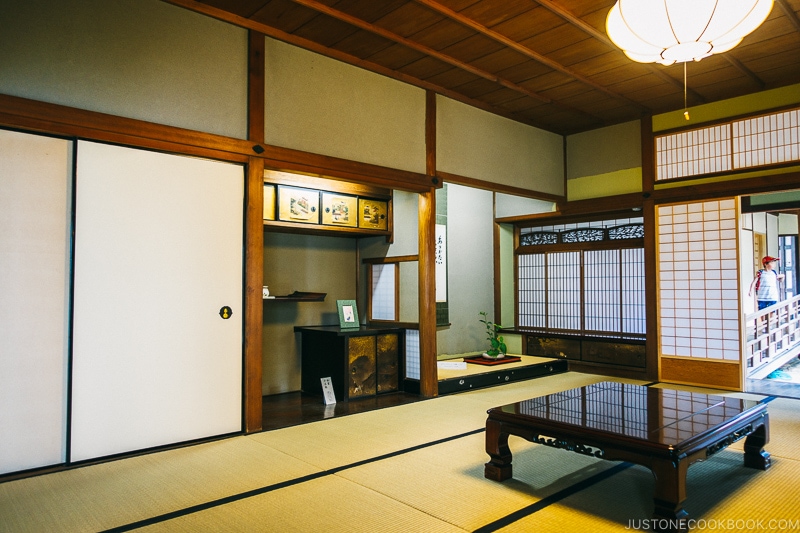
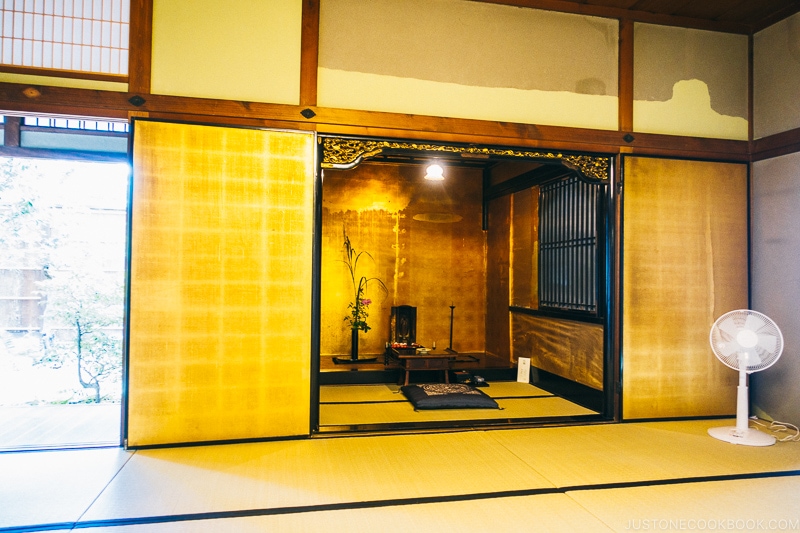
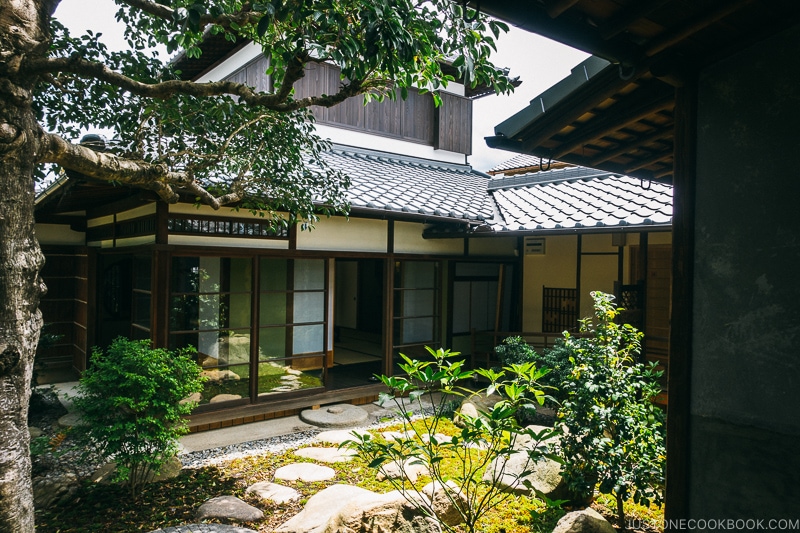
Besides the well-preserved machiya, Japan’s oldest Buddhist temple Gangoji is also in Naramachi.
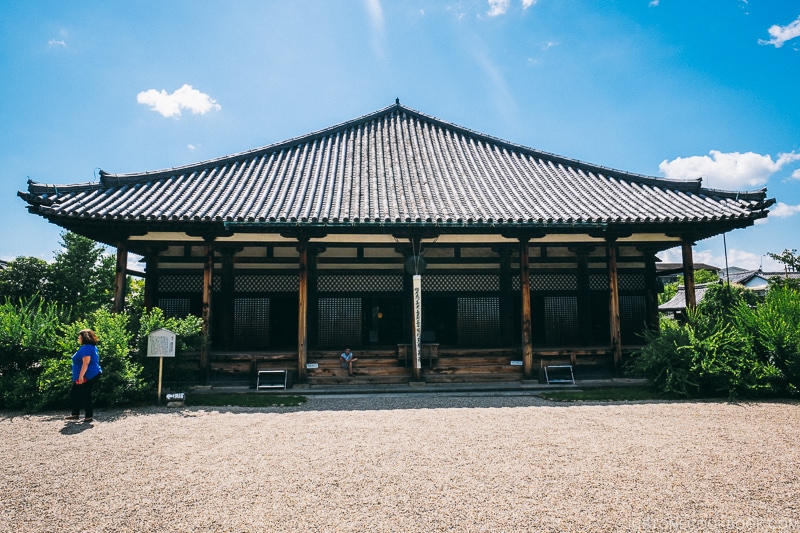
Kakinoha-zushi (柿の葉寿司)
Just a bit north of Naramachi are many small streets and shops you can explore. There are a few restaurants that sell Nara specialty – kakinoha-zushi (柿の葉寿司). What is kakinoha-zushi? It’s sushi wrapped in permission leaves.
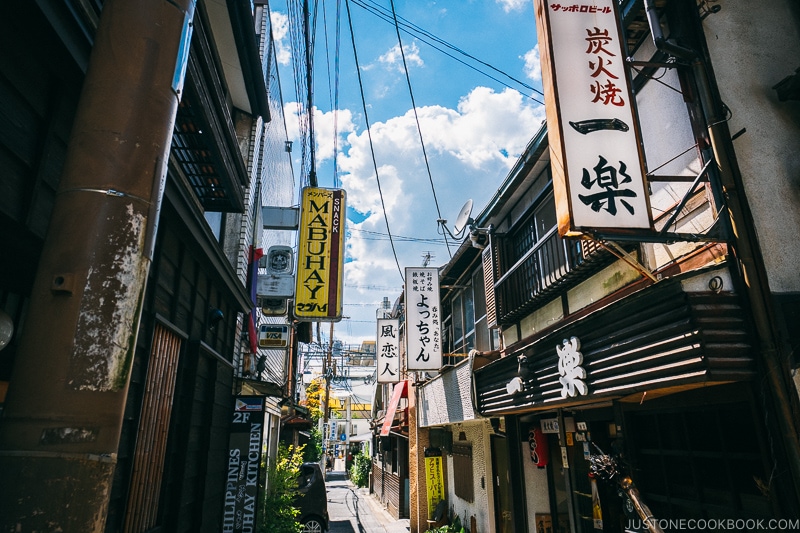
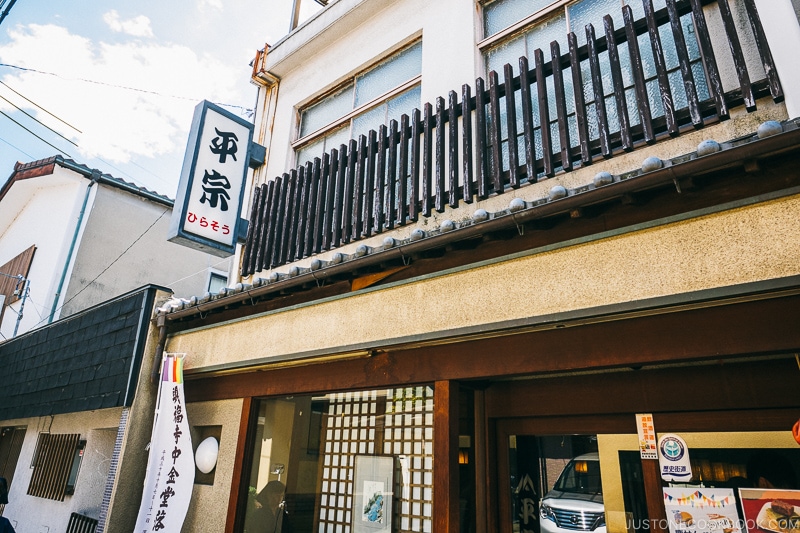
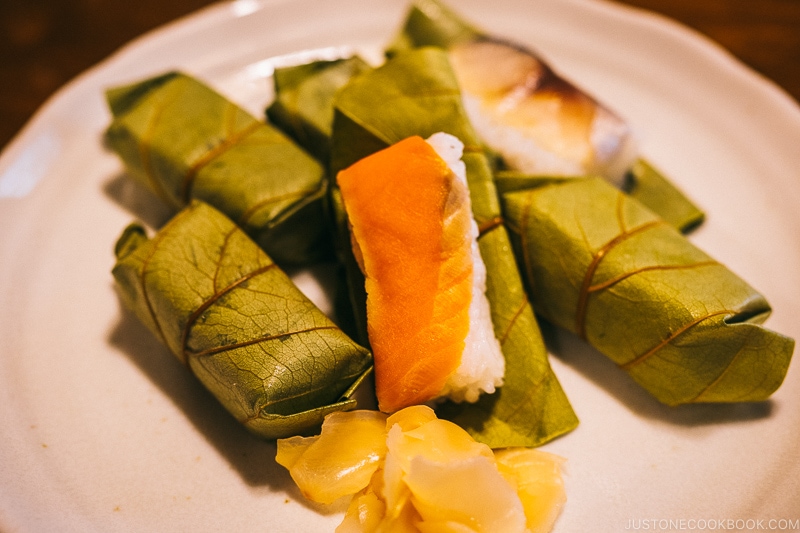
Since Nara is located inland it was difficult to transport seafood safely before refrigeration. Persimmon leaves had antibacterial properties and could keep the sushi fresh by wrapping inside the leaves.
Unlike typical sushi restaurants, there aren’t many varieties of fish to pick from. Kakinoha-zushi is usually served with salmon, mackerel, and trout. With our set meal at Hirasou, it came with assorted sushi including grilled corn, and green tea rice was served on the side.
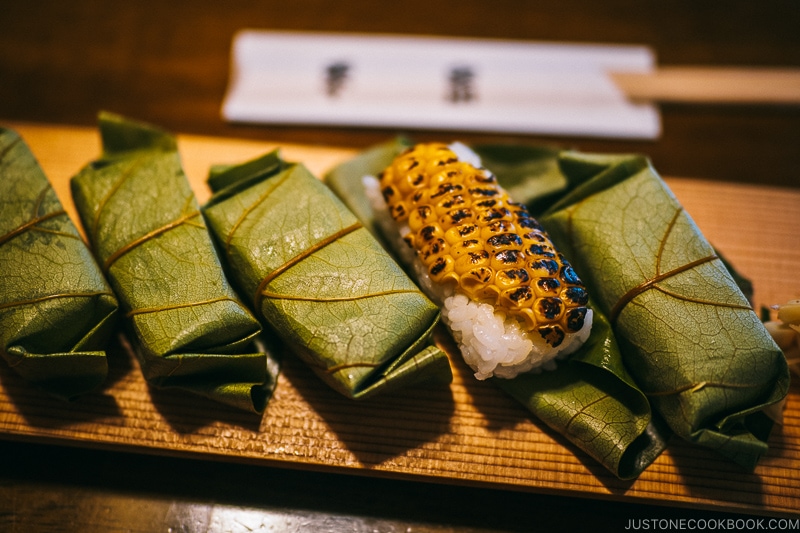
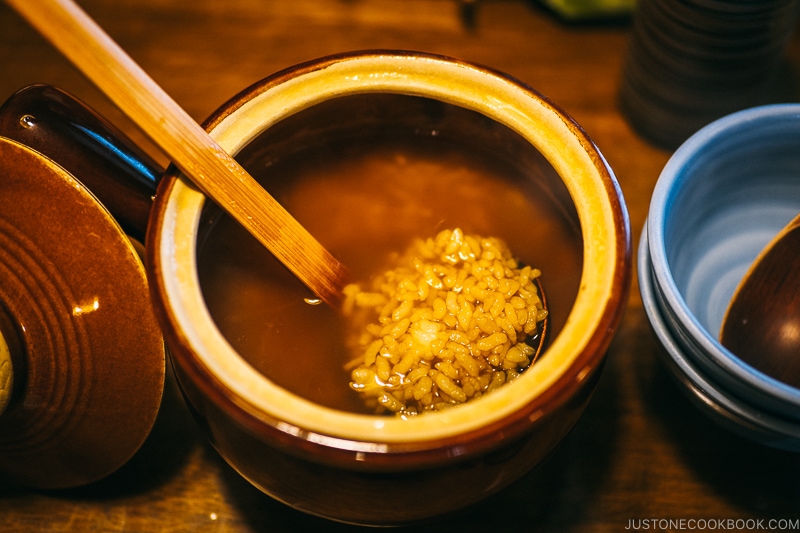
Mochiidono Center Gai (Mochiidono Shopping Street)
Continuing walking just a bit north you’ll find the covered shopping arcade Mochiidono Center Gai. You can find all sorts of Japanese souvenirs on this street along with many restaurants.
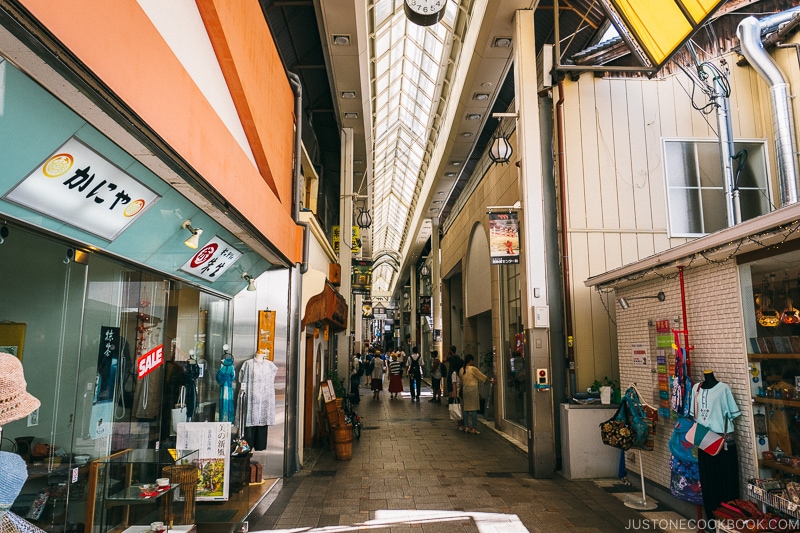
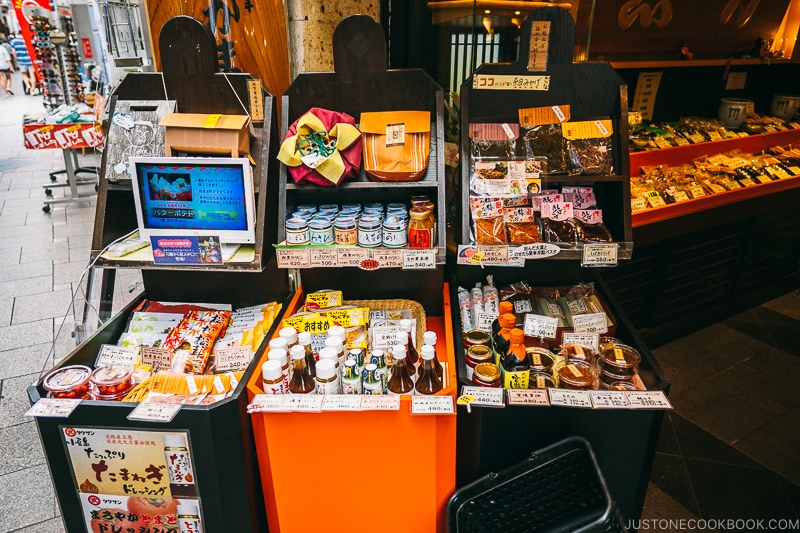
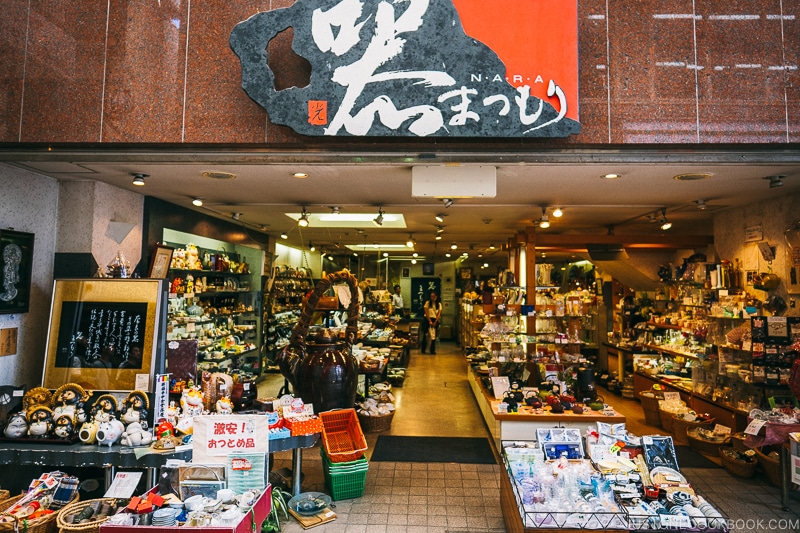
What drew us there was the popular mochi making shop Nakatanidou. Nakatanidou has been making headlines with its rapid pounding and kneading of mochi and you can check out how they do it in the clip below.
The mochi shop do not have a set time when they perform, and our suspicion is that the shows are put on when a tourist bus stops there to buy mochi. Regardless, their yomogi mochi was super delicious.
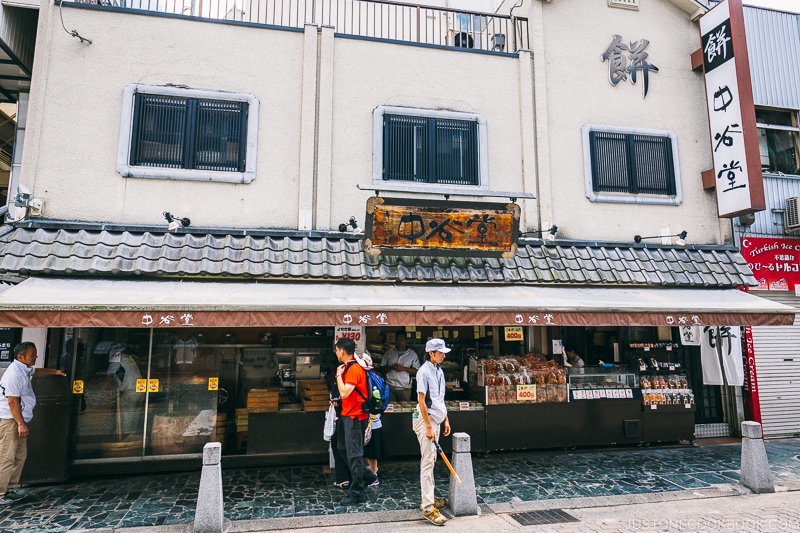
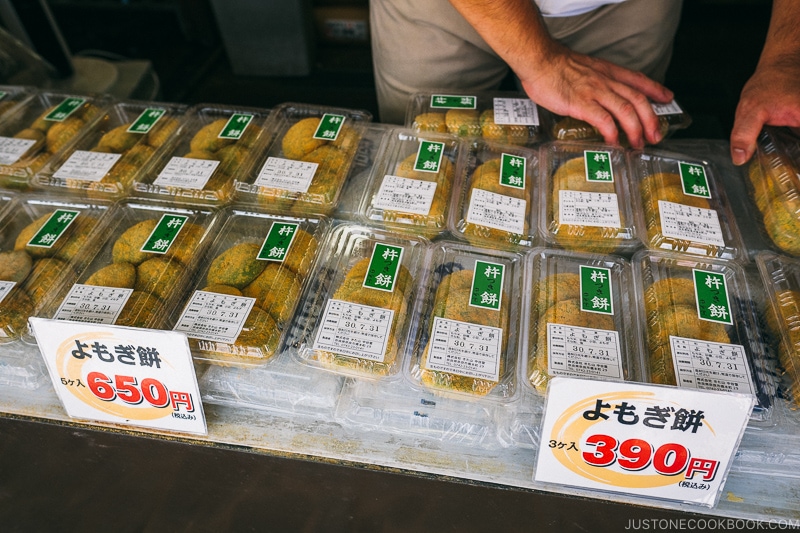
Hotels in Nara
We recommend spending at least one night when visiting Nara. You can easily do a day trip from Kyoto but relax, slow down, and enjoy many attractions the city has to offer. On our two trips there over the years, we’ve stayed at a ryokan and also one time at the historic Nara hotel.
Asukasou Ryokan
The ryokan we stayed at was Asukasou Ryokan and we really enjoyed our stay there. Its location is very convenient and you can walk to many of the popular attractions in Nara including Kofukuji and Nara National Museum.
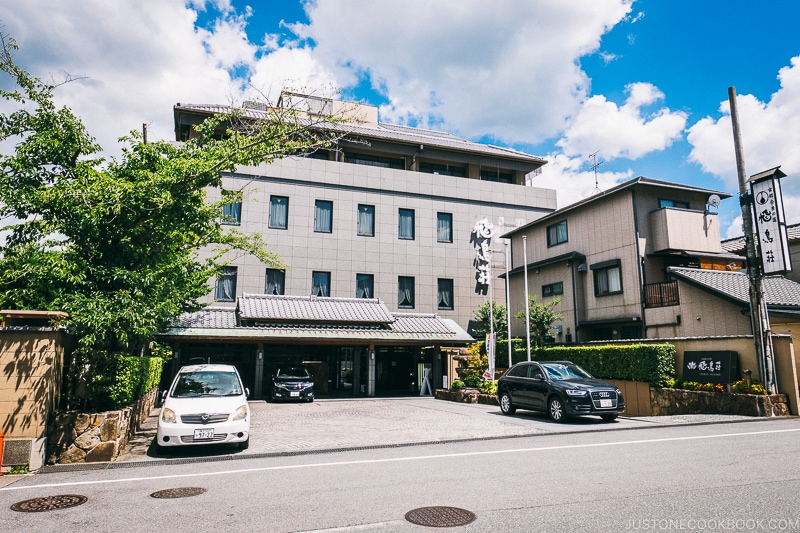
From our room, we could see the five-storied pagoda at Kofukuji from our window. The rooms are standard ryokan setup, with a balcony sitting area, the main room, and then restroom and bath near the entry,
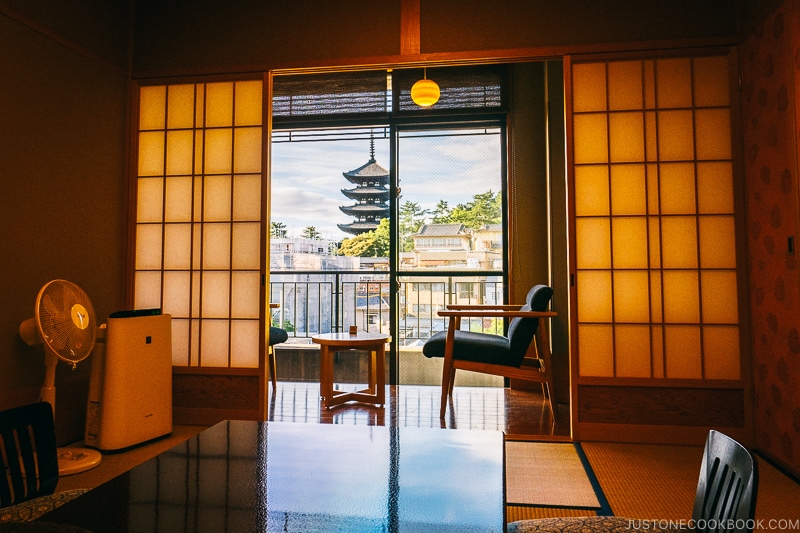
The bathroom at Asukasou Ryokan are updated and very clean and modern.
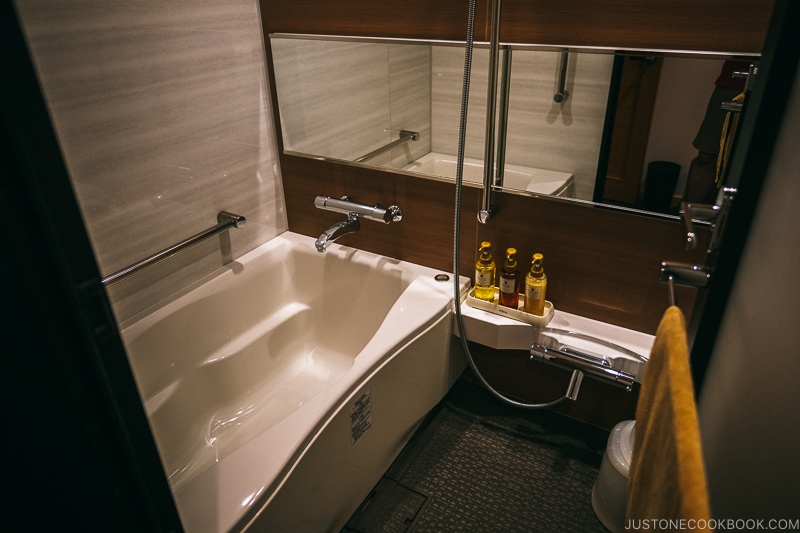
During a ryokan stay, while you’re eating dinner the staff will transform the room for sleeping by laying out the ofuton.
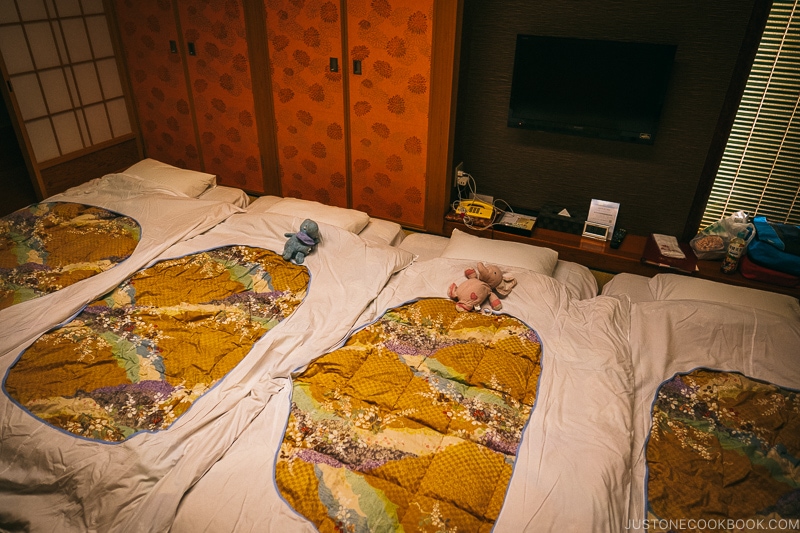
There are 5 main criteria for evaluating a Japanese ryokan, it’s service, facility, dinner, onsen (hot spring), and breakfast. Asukasou Ryokan had great service and the staff paid attention to small details. When we first checked in, they had a tray of traditional Japanese candies where children can pick and select what they wanted which made them really happy.
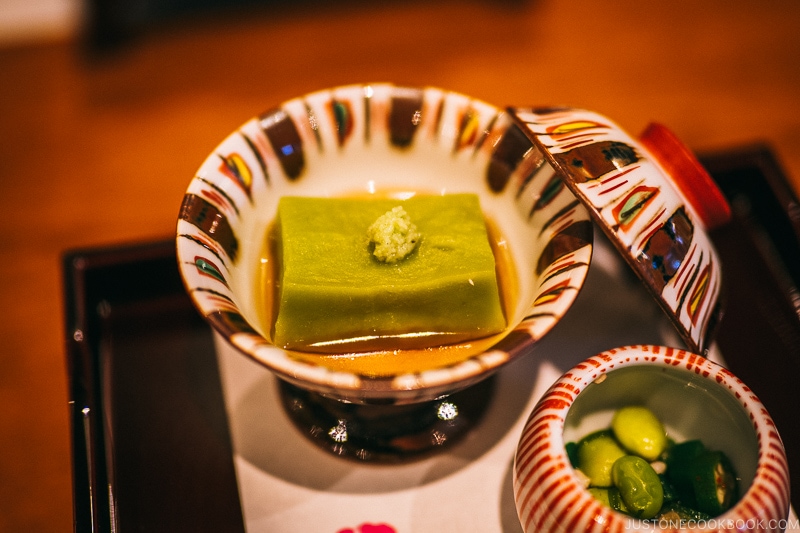
The dinner was standard kaiseki where the chef showcased local seasonal ingredients. The meal was delicious and the dishes were delicate. The breakfast was also very tasty and well prepapred. The only downside of the ryokan was it’s very small onsen area. It was on top of the building so the view was good, but there was only one small soaking tub.
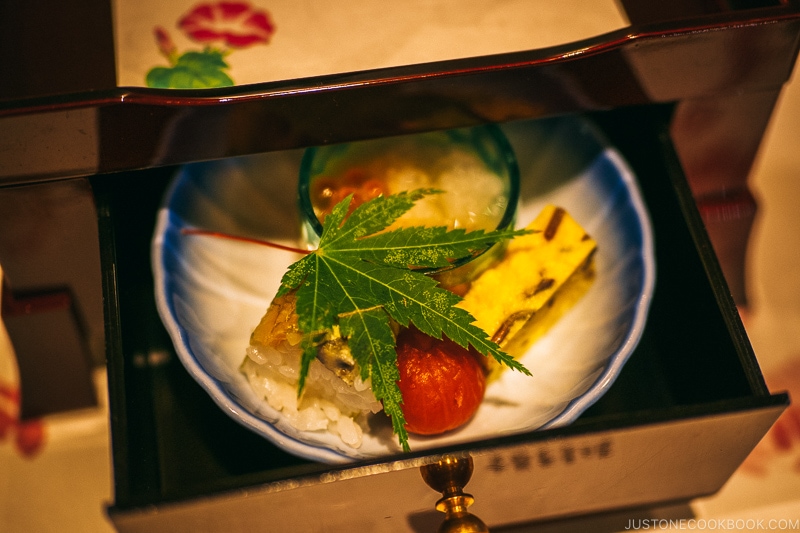
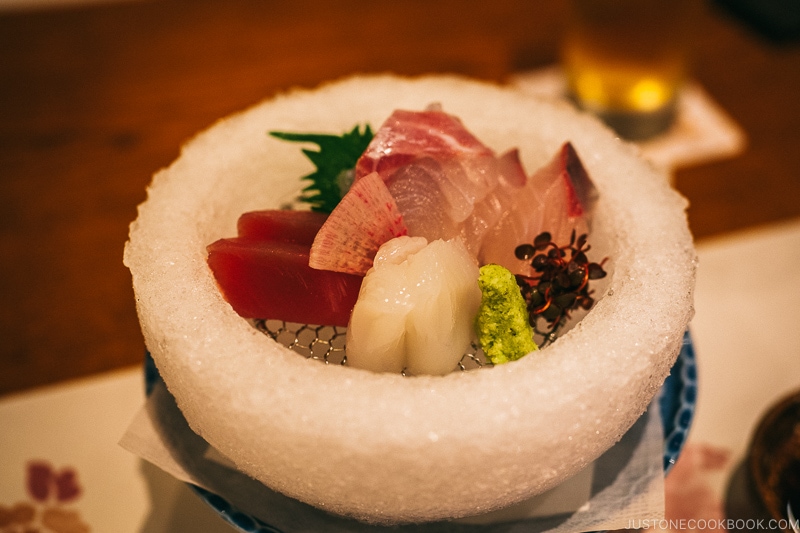
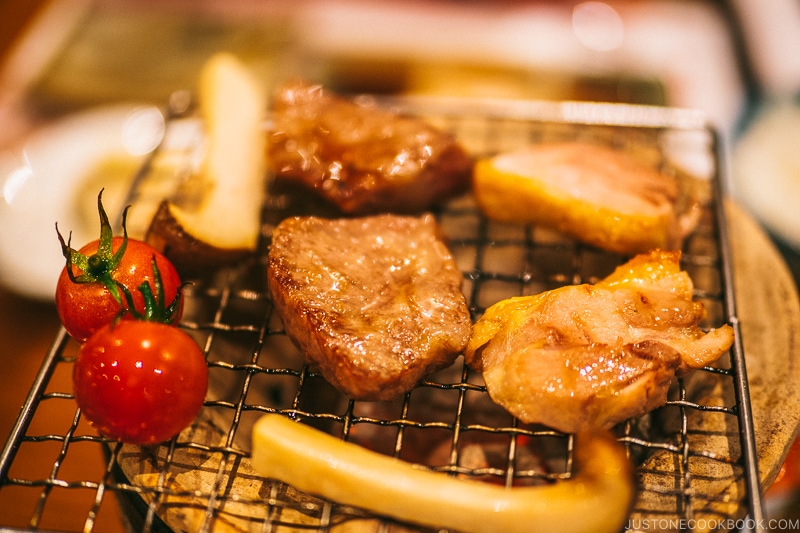
Nara Hotel
If you want to experience a hotel with a rich story in Nara, look no further than Nara Hotel. With over 100 years of history, Nara Hotel is the choice for emperors, presidents, and many celebrities to the city.
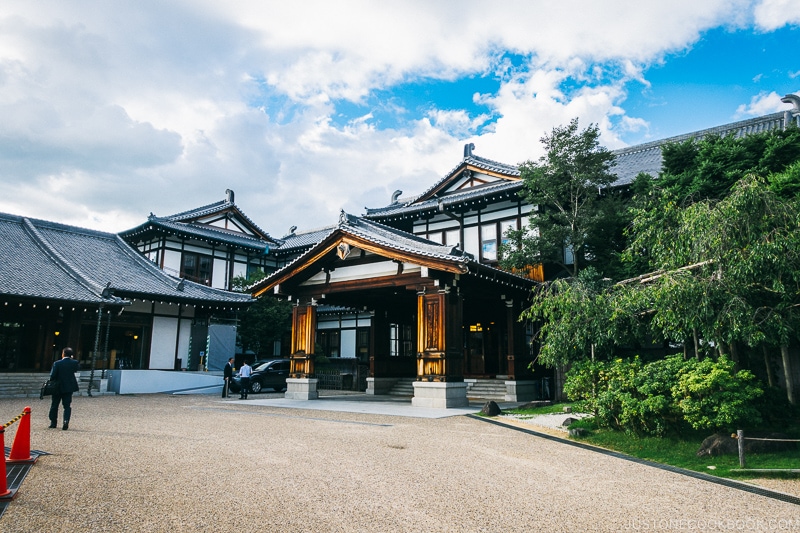
Nara Hotel is conveniently located in Nara Park and closed to many sightseeing spots.
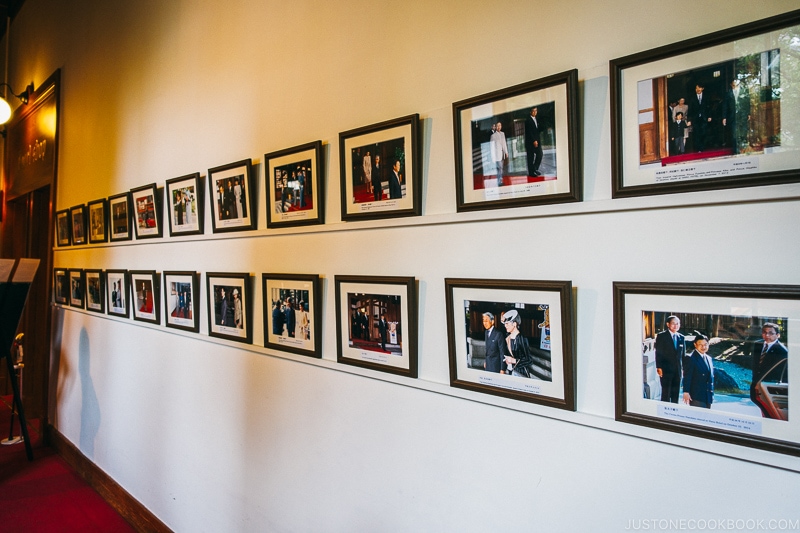
The interior of Nara Hotel is traditional design and it has kept its classic look.
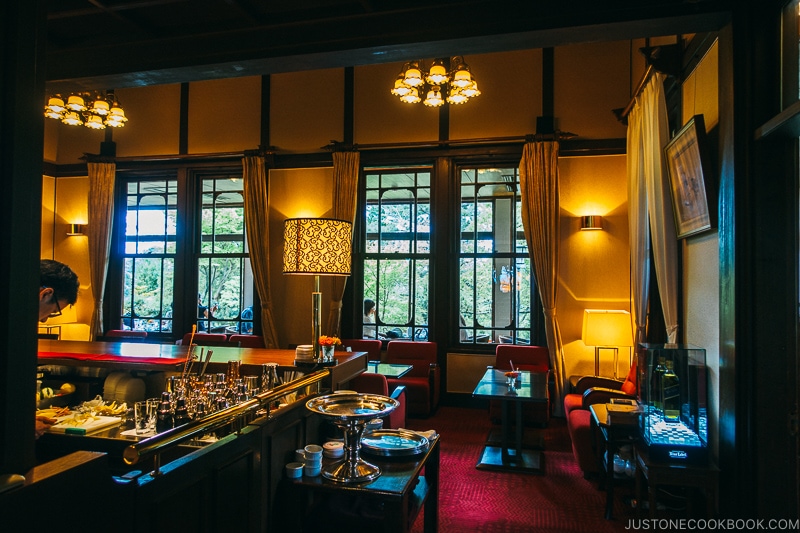
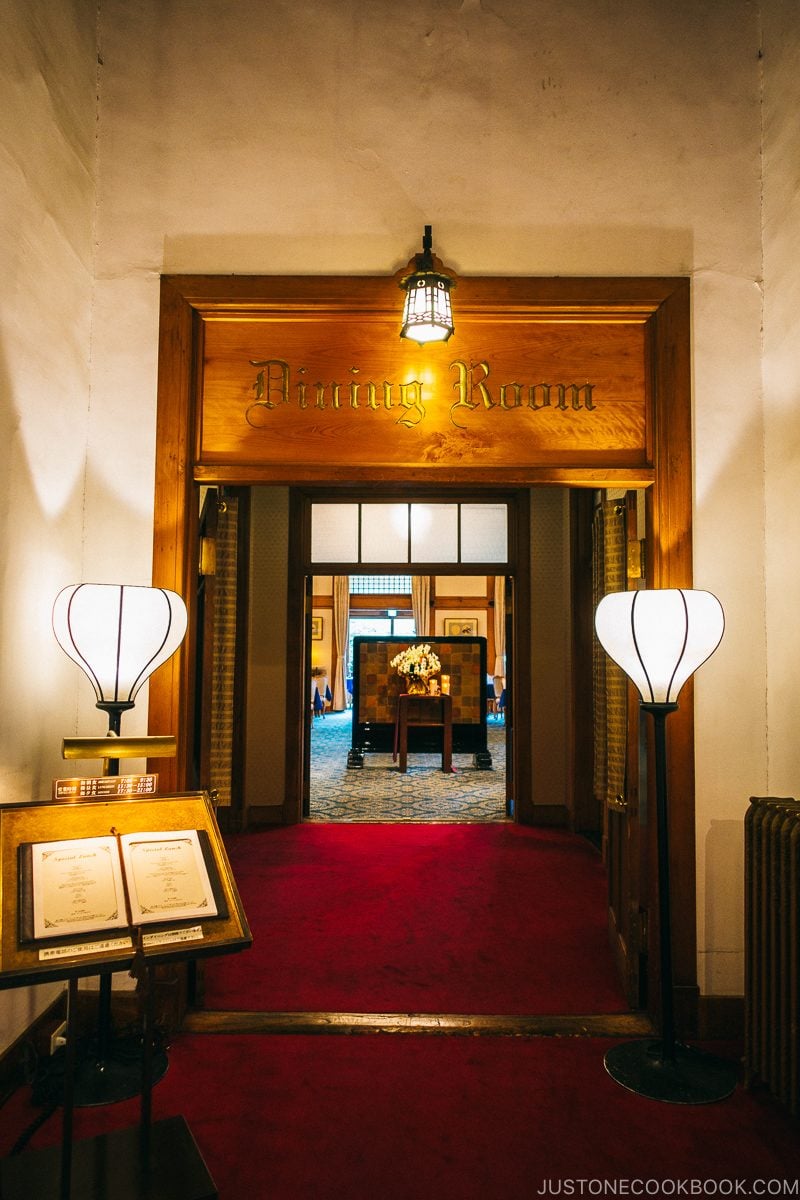
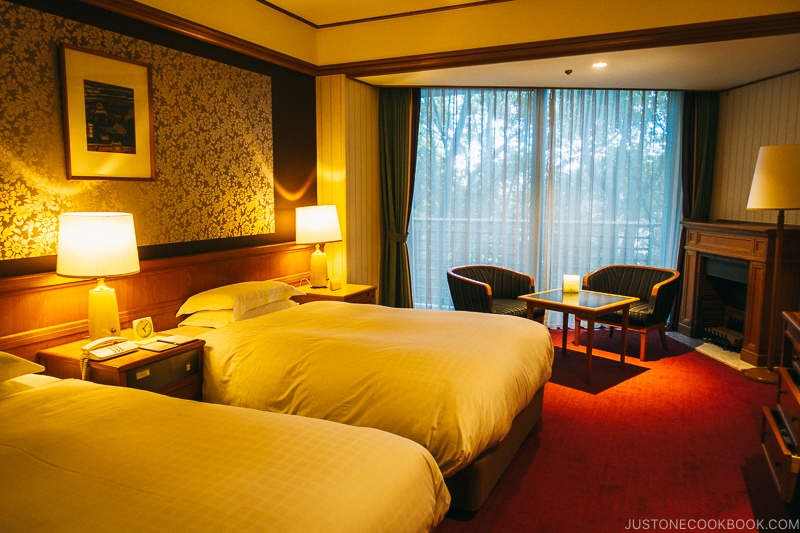
Nara National Museum
Not far from the Nara Hotel is Nara National Museum. The museum has an amazing collection of historic Buddhist sculptures, paintings, and statues. The museum’s history goes back to 1889 and there are many priceless national treasures in their collection.
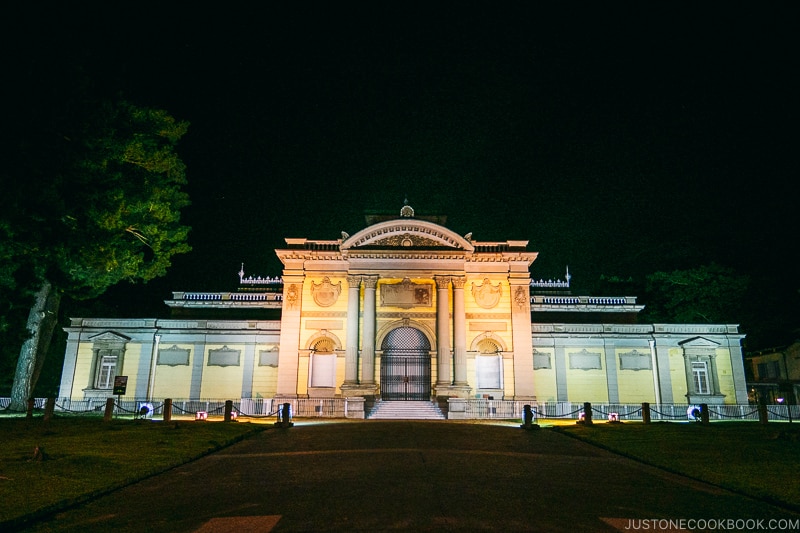
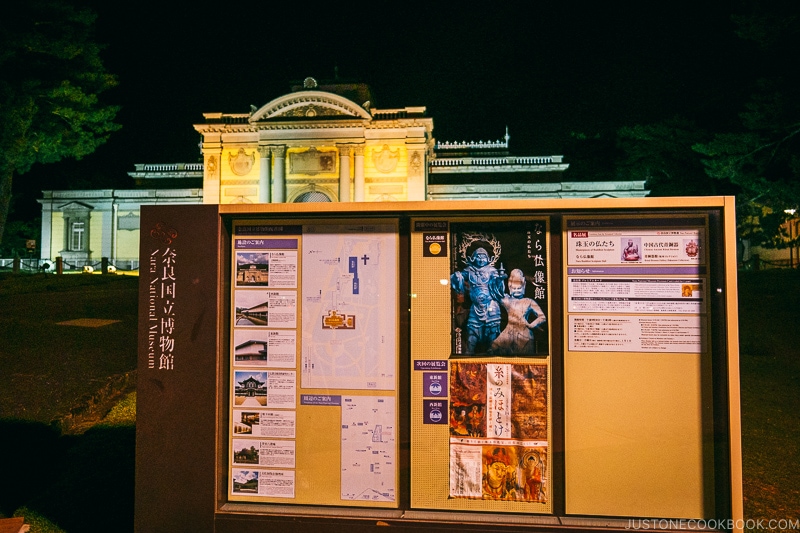
Nara Park
Lastly, when you’re going between Todaiji and Kasuga Taisha, you’ll cross the beautiful Nara Park. Nara park has hundreds of wild deers roaming around freely.
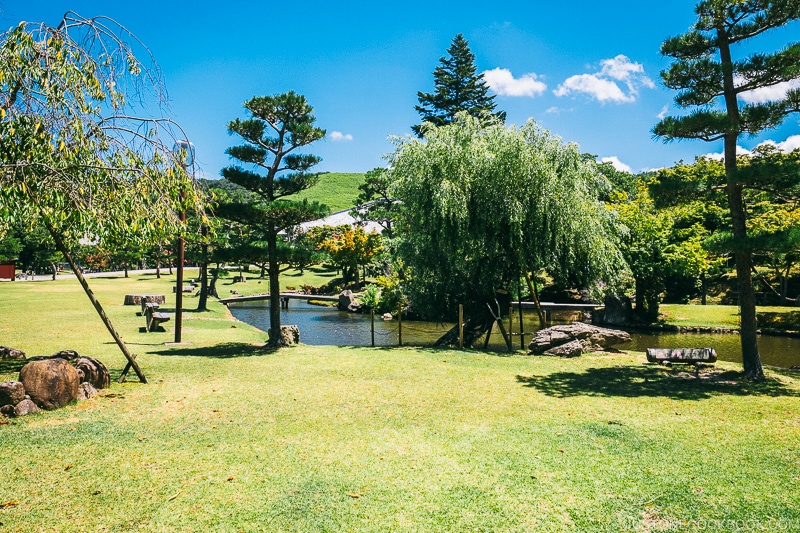
The park is very large and has many locations with beautiful scenery. You can buy shika senbei to feed the deer but please do not tease them and treat them with respect. Also, watch out while feeding as the deer could be aggressive if you have food.
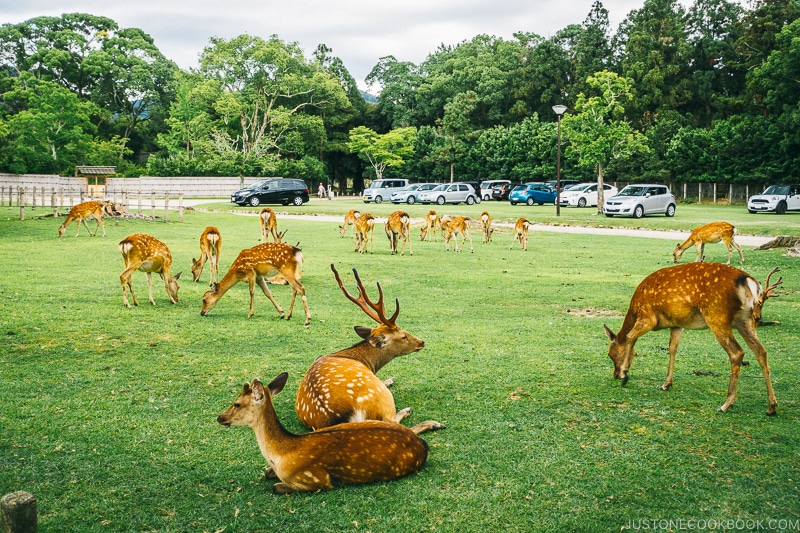
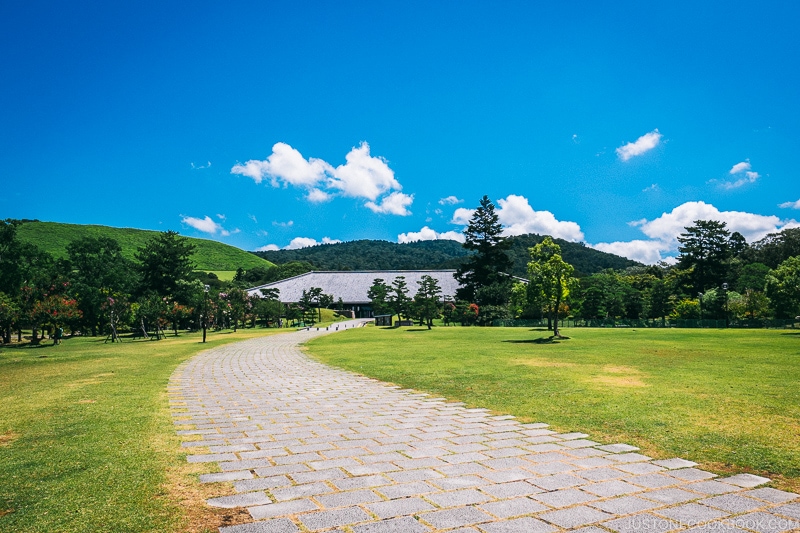
Enjoy Many Thing to do in Nara
We hope you enjoyed our travel guides on Nara. We had a fantastic two days there, visiting centuries-old temples and shrines, exploring new food like kakinoha-zushi, and taking in the peaceful and calm sceneries at Nara Park. If you have limited time, do not skip Todaiji, Kasuga Taisha, and Kofukuji.
We highly recommend spending one night and experience Japanese hospitality at a ryokan or Nara Hotel. Stroll through Naramachi and see the well-preserved machiya, and check out the priceless treasures at Nara National Museum.
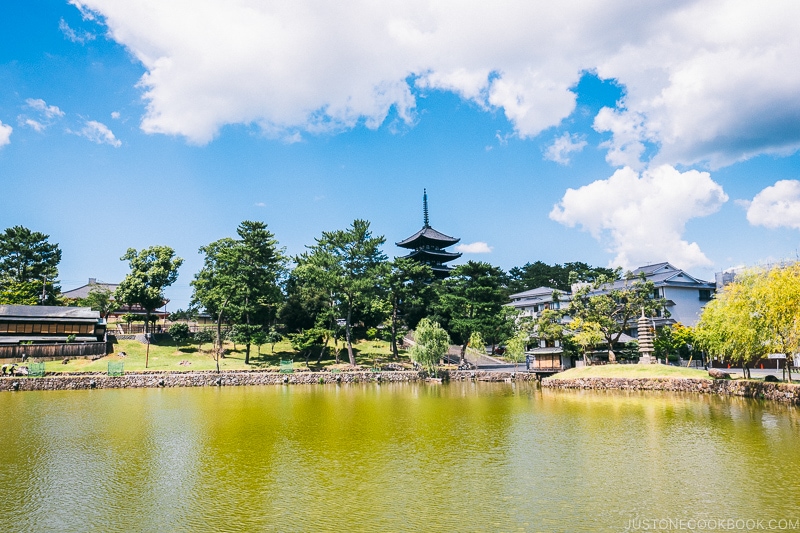
Thank you for traveling with us and if you want to check out our adventures throughout Japan, check out our Japan travel guides.

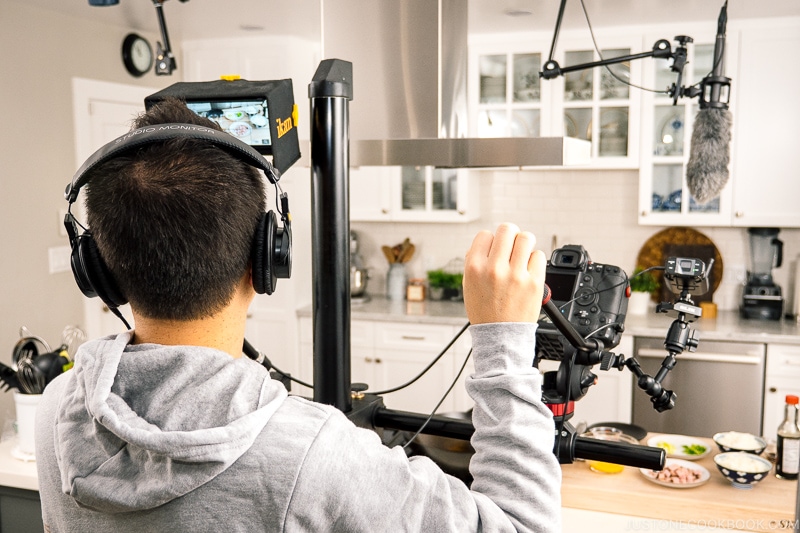










This was a great read, most notably since I live in Canberra, Australia which has a “sister city relationship” with the city of Nara. I don’t really understand exactly how it works (I don’t think it’s super formal in terms of what we do with it, but there seems to be a lot of history behind it going back a few decades) but we have a local park dedicated to it and hold a candle festival every year, which apparently some high school students from Nara come and perform at. Plus, their city council donated a whole bunch of money after our devastating 2003 bushfire season, which we’re understandably grateful for. I’ve been to the park a few times and it’s quite nice, but I’ve never been to the festival.
Anyways, the entry caught my eye because of that and was quite interesting and informative. My partner would like to take a trip to Japan once this coronavirus mess has cleared up, and it’d make sense for us to try and slot in a trip there given the stuff I mentioned above. Thank you for the write-up!
Hi DC,
A city nearby us also has a sister city relationship with Toyonaka (near Osaka) in Japan. I think it’s an informal relationship and more information are available below:
https://sistercities.org/about-us/what-is-a-sister-city-3/
Nara is a mesmerizing city and very peaceful compared to the other touristy areas in Japan. We loved our visit there and would recommend spending two nights to enjoy this historic former capital.
[…] If you are interested in other Nara posts, check out our guide on Nara Temples and Shrine and Nara Travel: Things to do in Nara. […]
Hi Nami
You did it again, a wonderful travel post ~~~ I love the hearty way, you show us around. Wonderful pictures. And yes, you are right, one day is not enought. I’ve been there two years ago. Starting after brunch from Ibaraki-shi, via Kyoto. Using the ICOCA card, I don’t remember the price, but it was with many stops.Time was limited and now I realize, what I did not see sniff ! But anyway, the park is soo beautiful, sakura season. The buddha statue is breathtaking, stamps in my temple stamp book ( last stamp from Miyajima last year october, more deers ~) and Kakinoha-zushi is truely delicate, took some home ~~~
But one fauxpas every day haha. Do NOT take your half latte from Starbucks with you, there is no litter bin fufu It took me a felt eternity to drop it. The employees at a 7-Eleven had their fun ha ha
Best regards Mathi
Hi Mathias,
Thank you for reading our post and leaving such a sweet comment. Sounds like you had a great time in Nara and Miyajima. What is the temple stamp book you are referring to? We see the stamps in the temples but wasn’t aware there was a book for collecting them.
Difference in Japan is when there is no trash can around, people keep their garbage and dispose it properly most of the time. In the US people just toss it on the side and don’t care about the envrionment.
Cheers
How about going to nara from osaka? What transportation is the best with young kids like yours?
Hi Janet,
It’s very easy to get to Nara from Osaka. You can take the Kintetsu-Nara Line from Namba Station to Nara Station. The cost is 560 yen per person and takes about 1 hour.
Alternatively you can also take the Osaka loop line from Shin-Imamiya Station to Nara Station. It’s the same cost but slightly faster at 35 min for the trip.
Have fun!
Hi Nani, I have been reading your travel blogs to Osaka for my upcoming trip and took your advise to stay a night in Nara. So will be going straight from the Osaka airport to nara. Can I ask if there is an easier way to go to asukasou hotel from the nara station? Can we hop on to the loop bus with our luggages and how far to walk from kofukuji where the loop bus will stop to the hotel? Or just take the taxi straight and drop off our luggages before roaming the town.
Hi Indy,
You should take the train from Kansai International Airport to Kintetsu-Nara Station and not Nara Station. It’s a 9 min walk or 4 min taxi ride to Asakasou from Kintetsu-Nara Station.
Let us know if you have any questions.
Hi, Nami
I LOVE your website and look forward to all of your posts. I especially admired your trip to Japan and the fascinating pictures and explanations of the beautiful historical places. I will revisit them to read more intensely.
Glad that you and your family are able to visit so many places! Your children are adorable (your daughter looks like a mini fashionista).
Also, I keep learning so much from your blog and save the recipes (I love sushi, BTW).
Congrats on the new addition to your family. Have a wonderful week end!
Lisa
Hi Lisa,
Thank you for reading our travel posts and we’re so glad you enjoy them. We write them to give our readers the best tips so you’ll have the best experience when you visit based on what we learned.
Since love you sushi, consider making temaki (https://www.justonecookbook.com/temaki-sushi-hand-roll/) at home if you haven’t tried. It’s our family’s weekly ritural and much cheaper option than eating in Japanese restaurants.
I just love all of the pictures and stories you tell us about Japan. I hope to travel there one day.I was born in Japan but have never have been back after leaving as a baby. What amazes me is how clean everything & everywhere seems to look. The food probably speaks for itself I bet. You have such fabulous Japanese recipes & I truly enjoy them all so thank you.
Hi Joann,
Thank you for reading our travel posts. Japan is one of the cleanest if not the cleanest country I’ve been to. All the public facility are well maintained and you hardly see any garbage on the streets. If you want to travel to Japan, go during the low season when it’s less crowded and the additional benefit is cheaper airfare and hotels (avoid summers).
Cheers